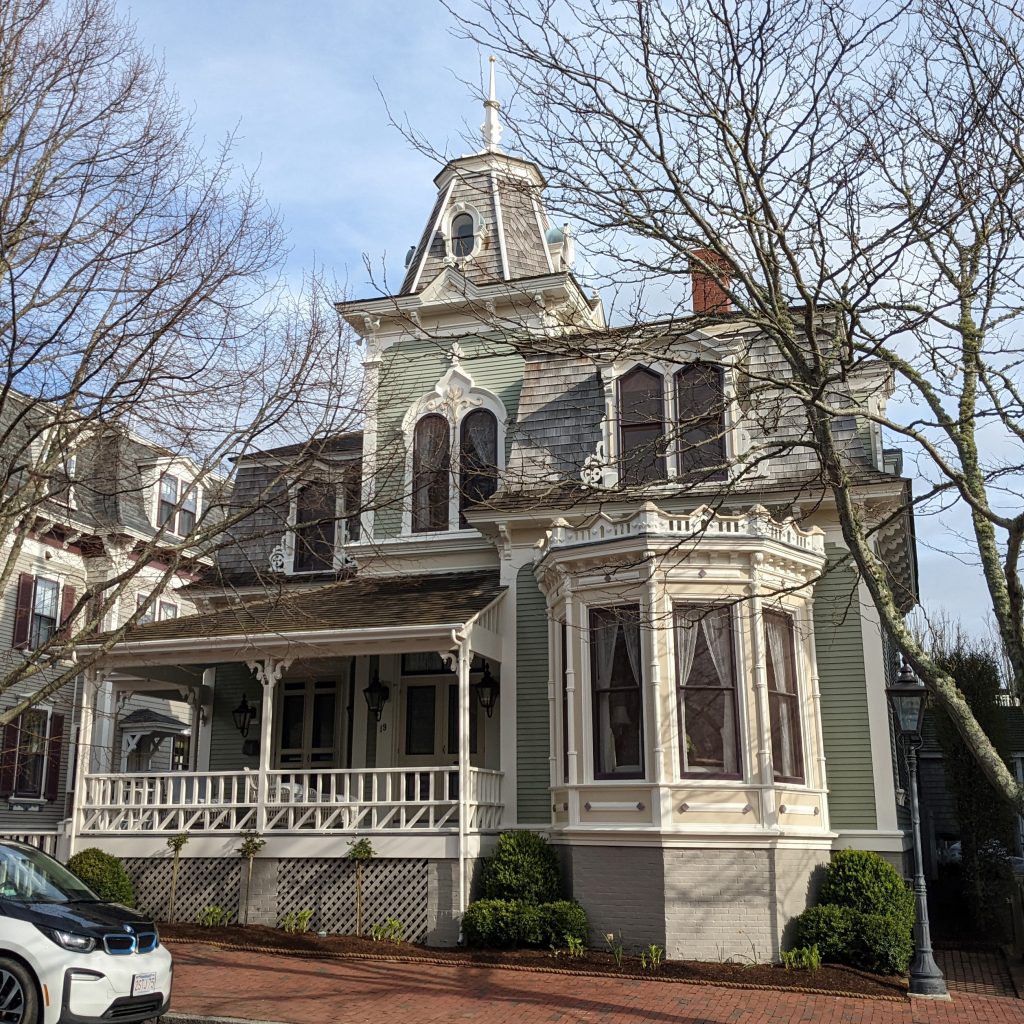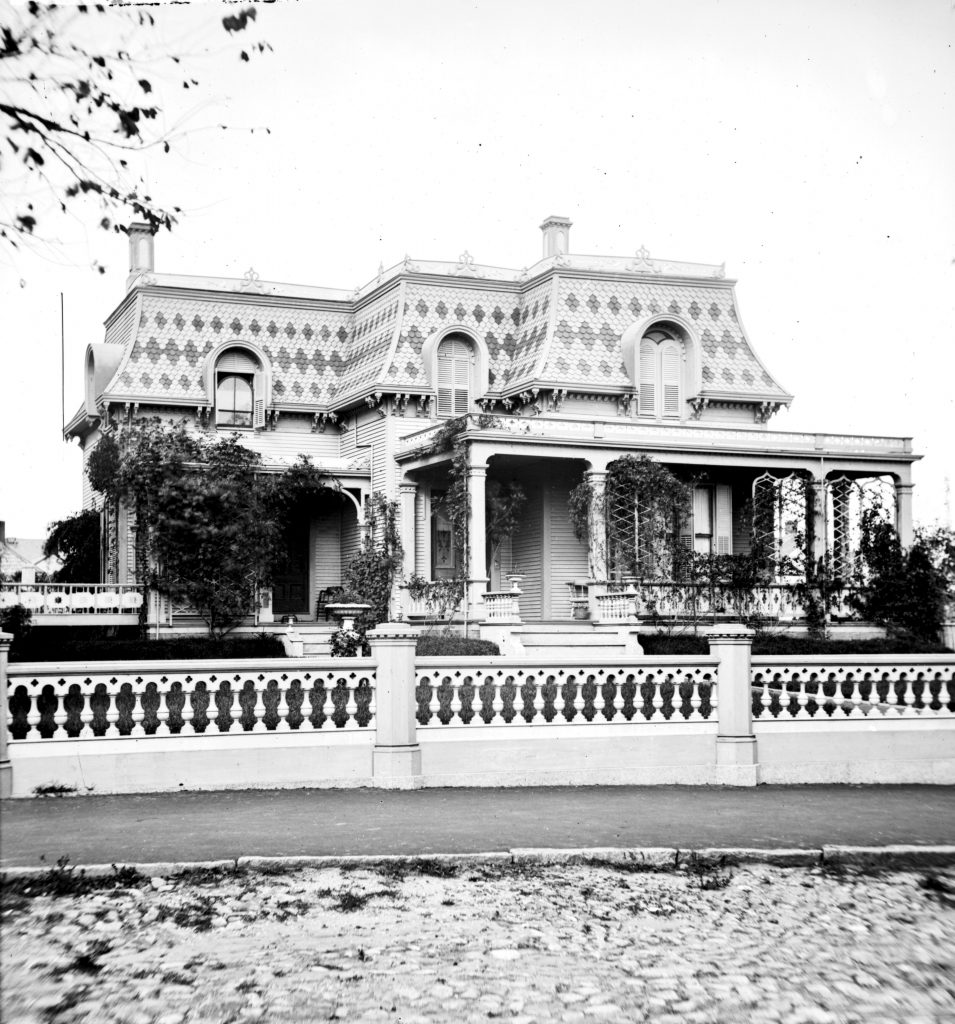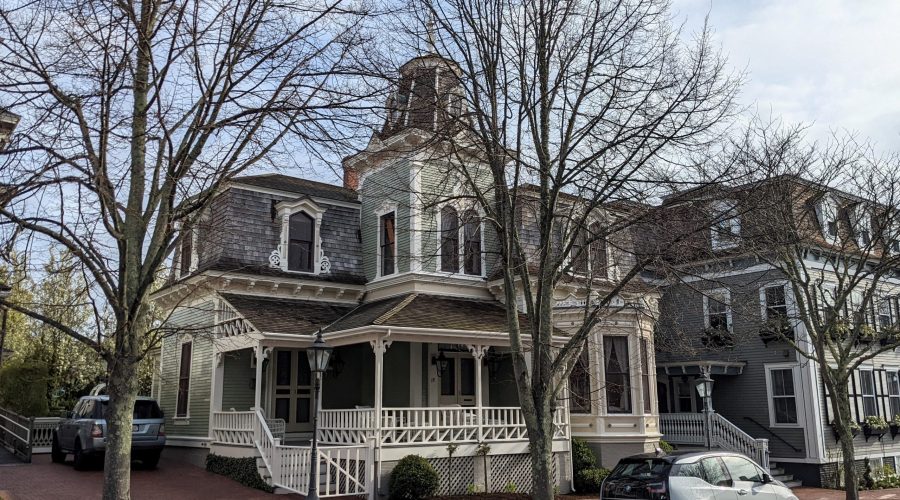Everett U. Crosby, one of many 20th-century Nantucket historians fixated on the whaling era, wrote in his 1937 treatise on Nantucket buildings, 95% Perfect: The Older Residences at Nantucket, that after 1860 “there was not much building of consequence of any dwellings which need to be considered.” That few buildings of note were built on Nantucket in the years following the end of the whaling industry is a common misconception. In fact, there are beautiful Victorian structures scattered across the island.
The house at 19 Broad Street is standing proof that Crosby and others who thought like him were mistaken. 19 Broad, recently listed for sale, is one of the finest examples of Victorian architecture remaining on Nantucket, retaining many of its character defining features.
Nantucket coal merchant Andrew Hunt (1833-purchased a plot of vacant land along Broad Street in December 1877. By October 1878, The Inquirer and Mirror reported “One of the finest residences on the island is that of Mr. Andrew Hunt, now building on Broad Street, by Mr. Charles H. Robinson. The ornamental carving around the bay-window is the work of Mr. James W. Folger, whose genius in this department of fine art workmanship is meeting with the recognition that it deserves.” Charles Robinson, Nantucket’s most prolific builder of the late-19th century, had just the year prior built the house next door at 21 Broad Street, for Hunt’s brother-in-law William T. Swain. In addition to being residential neighbors, Swain and Hunt also had offices next door to one another on Whale Street, at the head of Old South Wharf.

In addition to 19 and 21 Broad Street, Charles Robinson designed and/or built such notable structures as the Surfside Lifesaving Station/former Star of the Sea youth hostel (c. 1874), the Siasconset Union Chapel (c. 1883) and the Stone Barn on Brant Point (c. 1889). Many of the remaining Victorian-era homes in town are of his design, including 51 Fair Street (c. 1878), and his own dwelling on the corner of Fair Street and Martin’s Lane (c.1870).

By the early part of the 20th century, Victorian styles had fallen decidedly out of fashion, and many buildings of the late-19th century were torn down. One such structure was the c. 1857 Eben Allen House, formerly located at 27 Broad Street, next door to the Jared Coffin House. Allen, who began his career on Nantucket as a tailor, then entered the clothing sales business, bought the hotel then known as the Ocean House in 1857, and likely had his house built next door shortly thereafter. But, when the newly rebranded and restored Jared Coffin House opened in 1963, its owners, Walter Beinecke Jr.’s Nantucket Historical Trust, decided to demolish Allen’s home and make way for an annex, the 12-bedroom Daniel Webster House, which opened in 1964. Even in the case of Victorian homes which remain standing, many were stripped of their characteristic detailed trim like bargeboard and bracketed cornices, including 44 Fair Street, built c. 1859 by carpenter William B. Gardner.
Just as Nantucketers in the mid-20th century showed disdain for the architecture of the 1860s or 1870s, many people today do not appreciate structures of the more recent past. Notable examples of mid-century modern architecture have been demolished in the last handful of years, demolitions of buildings younger than fifty years old happen every week, and a preference for “Quaker-like” buildings still predominates. But buildings like 19 and 21 Broad Street are a great reminder that Nantucket architecture is notable for its combination of styles that work together to make our historic island so vibrant and vital.



